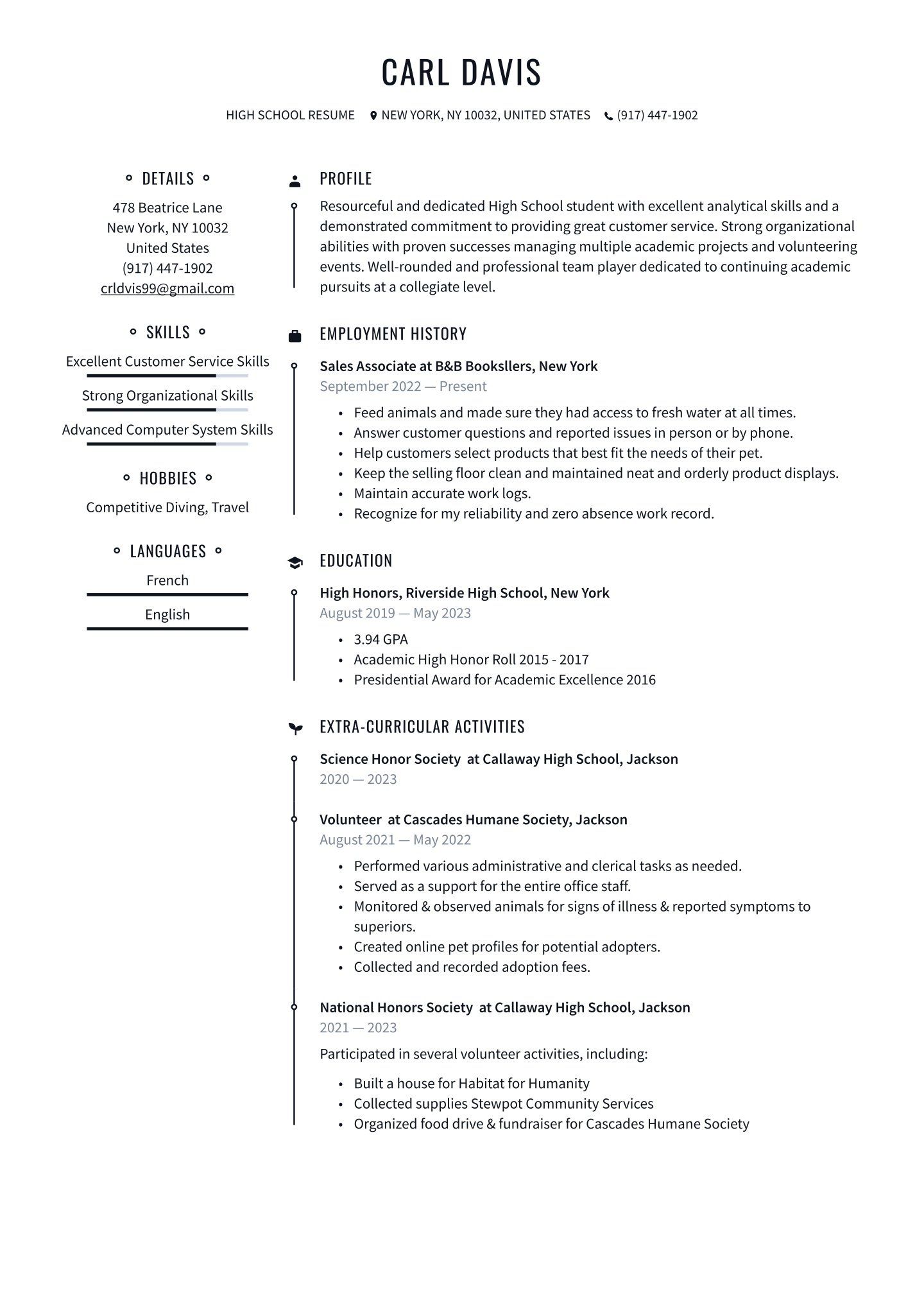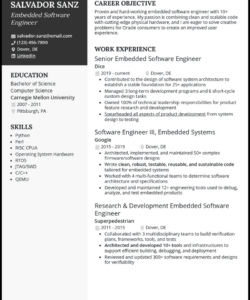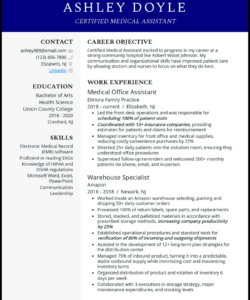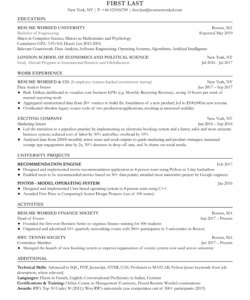Starting to think about a resume when you’re still in high school might seem a little daunting. Maybe you’re looking for your first part-time job, an internship, a volunteer opportunity, or even preparing for college applications and scholarships. Regardless of your goal, having a well-structured resume is a crucial first step in presenting yourself professionally. It’s your personal marketing document, showcasing what you’ve accomplished and what you’re capable of, even if you feel you don’t have much “experience” yet.
The good news is that creating an effective resume doesn’t have to be complicated, especially when you’re starting with a basic high school resume template. This guide will walk you through the essential components and provide practical tips to help you build a document that truly represents your potential and opens doors to exciting new opportunities. Remember, everyone starts somewhere, and your high school years are the perfect time to begin building this vital skill.
What to Include in Your High School Resume and How to Get Started
Many high school students worry they don’t have enough “work experience” to fill a resume, but that’s a common misconception. Your high school resume isn’t just about paid jobs; it’s about showcasing your skills, responsibilities, and achievements from various aspects of your life. Think about school projects, extracurricular activities, volunteer work, and even personal interests that have developed transferable skills like teamwork, leadership, or problem-solving. Every little bit counts and can be presented in a way that highlights your capabilities.

Before you even start writing, gather all relevant information. This includes your contact details, academic history, any awards or honors you’ve received, extracurricular involvement, volunteer experiences, and even informal experiences like babysitting or lawn mowing. Having everything organized beforehand will make the writing process much smoother. Don’t be shy about listing things you might initially dismiss; you’d be surprised what can be reframed as valuable experience.
Education Section
This is often the strongest section for a high school student. Clearly list your high school’s name, its location, your expected graduation date, and your GPA if it’s strong (3.0 or higher). You can also include relevant coursework, especially if it relates to the job or opportunity you’re applying for. For instance, if you’re applying for a tech-related internship, mention your computer science classes.
Experience Section
Here’s where you get creative. This section can include paid jobs, internships, volunteer work, significant school projects, or even substantial roles in clubs and sports teams. For each entry, provide the organization’s name, your role, the dates you were involved, and 2-3 bullet points describing your responsibilities and achievements using action verbs. Instead of saying “worked at a food drive,” try “Organized and managed food donations for community drive, resulting in 20% increase in collections.”
Skills and Awards Section
This is your chance to highlight specific abilities. Think about both soft skills (communication, teamwork, problem-solving) and hard skills (proficiency in specific software, languages, certifications). If you’ve received any academic honors, athletic awards, or special recognition for your contributions, list them here. It demonstrates your dedication and achievements.
Here are some common sections you might include in your basic high school resume template:
- Contact Information (Name, Phone, Email, LinkedIn if applicable)
- Objective or Summary Statement (briefly state your goal or what you bring)
- Education (High School name, location, graduation date, GPA, relevant coursework)
- Experience (Paid jobs, internships, volunteer work, club leadership)
- Skills (Technical skills, languages, soft skills like communication, leadership)
- Awards and Honors (Academic, athletic, community recognition)
- Extracurricular Activities (Clubs, sports, special projects)
Making Your Basic High School Resume Template Stand Out
Beyond the content, the presentation of your resume plays a significant role in how it’s perceived. A clean, organized, and easy-to-read layout makes a strong first impression. Choose a professional, legible font (like Calibri, Arial, or Georgia) and maintain consistent formatting throughout the document. Keep your resume to one page; for high school students, anything longer is generally unnecessary and can overwhelm the reader. Utilize bullet points effectively to break up text and make achievements scannable.
Accuracy and attention to detail are paramount. Nothing detracts from a resume more than typos, grammatical errors, or inconsistent formatting. Always proofread your resume multiple times before sending it out. It’s also an excellent idea to have a trusted friend, family member, or school counselor review it. A fresh pair of eyes can often catch mistakes you’ve overlooked, ensuring your professional image remains unblemished.
Remember that a resume is rarely a one-size-fits-all document. While a basic high school resume template provides a solid foundation, you should always tailor your resume slightly for each opportunity. Read the job description or program requirements carefully and highlight the experiences and skills that are most relevant to that specific role. This shows the employer or admissions committee that you’ve put thought into your application and understand what they’re looking for.
Finally, consider pairing your resume with a concise and compelling cover letter, especially for job applications. A cover letter allows you to expand on your interest in the position, highlight specific qualifications, and explain why you would be a great fit for the role. It adds a personal touch and can truly make your application memorable, moving you past just the bullet points on the resume.
Here are a few tips to make your resume shine:
- Keep it concise, ideally one page.
- Use strong action verbs (e.g., “managed,” “developed,” “led,” “organized”).
- Quantify achievements whenever possible (e.g., “increased sales by 15%,” “raised $500 for charity”).
- Proofread meticulously for any errors.
- Tailor your resume for each specific application.
Embarking on the journey of creating your first resume is a significant step in your personal and professional development. It forces you to reflect on your experiences, identify your strengths, and articulate your aspirations, all valuable skills that will serve you well beyond high school. Even if you don’t feel like an expert yet, starting with a well-organized document will give you a tremendous advantage.
This foundational document will evolve with you as you gain more experience and refine your goals. Think of it as a living record of your achievements, continually growing and adapting. By putting in the effort now, you’re not just crafting a piece of paper; you’re building confidence, honing your self-presentation skills, and setting yourself up for future success in whatever path you choose to pursue.


